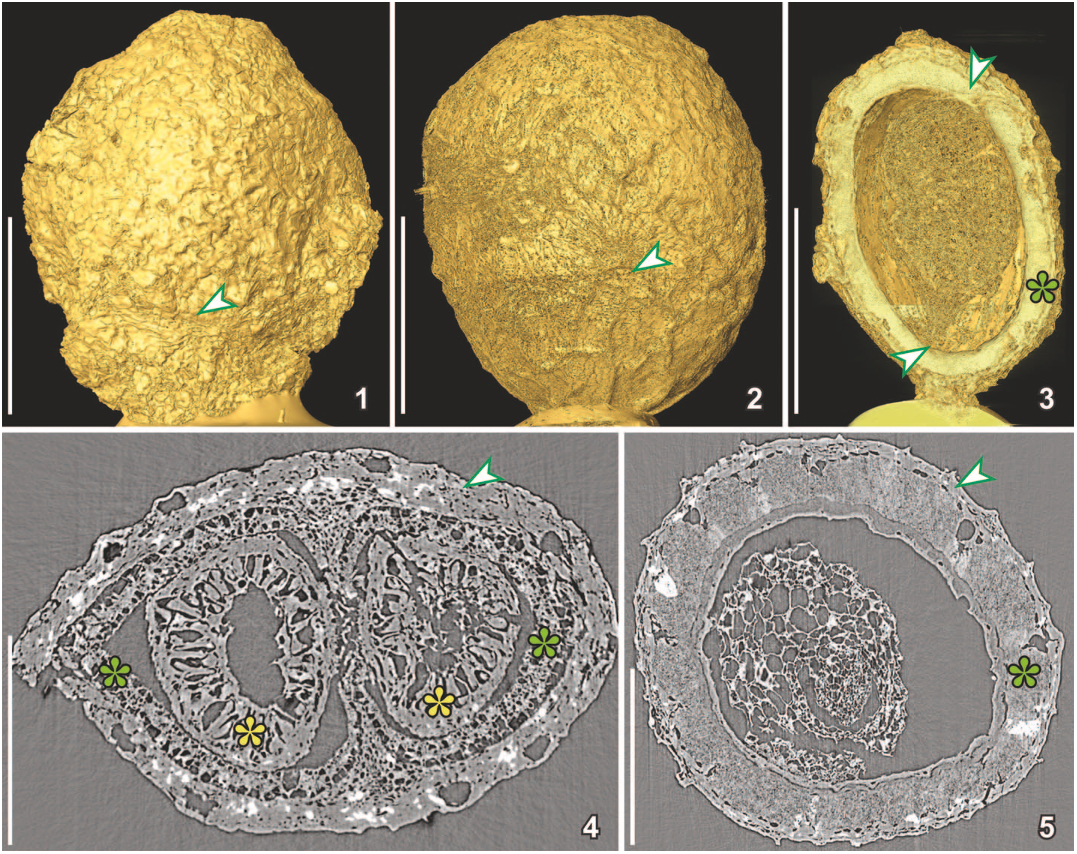




Did you find this useful? Give us your feedback















127 citations
...[79]), and for virtual dissection of fossil wood permineralized with pyrite to facilitate the characterization at the submicrometer...
[...]
51 citations
50 citations
...Volumes can be assessed using advanced methods such as x-ray computed tomography (CT) on fruits (Stuppy et al., 2003) or synchrotron radiation x-ray tomographic microscopy applied in paleobiological studies (e.g. on fruits and seed; Friis et al., 2014)....
[...]
...Direct measurement of a single seed volume is not easy to achieve, and published data are based mainly on sophisticated methods such as x-ray CT (Stuppy et al., 2003; Friis et al., 2014)....
[...]
48 citations
...SRXTM has been used to image minute charcoalified seeds and flowers from the Cretaceous Period [77,78], which resemble Cooksonia in their preservation, size fraction and in their rarity....
[...]
35 citations
276 citations
...Reconstruction approaches that are being developed in the medical field to overcome scan deterioration when a metal implant cannot be avoided (Prell et al., 2010; Boas and Fleischmann, 2011) may be helpful in these cases....
[...]
271 citations
...Comparable assemblages of Cenozoic age, prepared using the same techniques, typically contain fossils with a much wider range of sizes (Tiffney, 1984; Eriksson et al., 2000a), are usually preserved as lignite rather than charcoal, and rarely contain fossil flowers (Friis et al., 2011)....
[...]
...Comparable assemblages of Cenozoic age, prepared using the same techniques, typically contain fossils with a much wider range of sizes (Tiffney, 1984; Eriksson et al., 2000a), are usually preserved as lignite rather than charcoal, and rarely contain fossil flowers (Friis et al....
[...]
261 citations
...Extensive datasets on fossil plants have been accumulated from SRXTM analyses at the Tomcat beamline (Stampanoni et al., 2006) at the Swiss Light Source (SLS) covering material from the Carboniferous (Scott et al....
[...]
...Extensive datasets on fossil plants have been accumulated from SRXTM analyses at the Tomcat beamline (Stampanoni et al., 2006) at the Swiss Light Source (SLS) covering material from the Carboniferous (Scott et al., 2009), Permian (Slater et al., 2011), Cretaceous (Friis et al., 2007; von Balthazar…...
[...]
247 citations
...A suite of algorithms for the mitigation of rings and other artifacts are continuously being developed and several software routines based on different approaches (Sijbers and Postnovz, 2004; Boin and Haibel, 2006; Titarenko et al., 2010) are available for clearing such artifacts from reconstructed slices....
[...]
207 citations
...Although most features indicate affinity with Nymphaeales the systematic position of Carpestella lacunata is not fully resolved (von Balthazar et al., 2008)....
[...]
...The early presence of the Nymphaeales in angiosperm diversification is supported by macrofossil occurrences such as the compression fossils of Pluricarpellatia peltata B. Mohr, Bernardes-de-Oliveira and David W. Taylor (2008) from the Early Cretaceous of Brazil....
[...]
...These characters confirmed the earlier placement of the fossil flower in the Nymphaeales and Monetianthus mirus remains the oldest well-documented floral record of this basal lineage of angiosperms....
[...]
...Also, in Illicium the single ovule fills out the whole ovary cavity while in Nymphaeales this is not the case....
[...]
...Monetianthus mirus: the recognition of Nymphaeales in the Early Cretaceous....
[...]
SRXTM has already been informative where it has been deployed in paleobotany, but the full possibilities of these techniques are still relatively underexplored. The combination of SRXTM with the availability of a large numbers of diverse and well-preserved specimens offers the possibility of a new phase of rapid progress in their understanding of Cretaceous and other fossil plants. In many cases, the critical details revealed by the application of SRXTM have created opportunities to compare the fine structure of fossils with those of extant taxa, raising the possibility of also using SRXTM to study complex 3-D structures in living plants. This kind of material requires higher energies, and particularly for larger specimens where lateral merging and vertical stacking is required the acquisition time may be extensive.